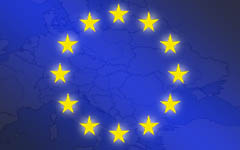|
18/05/2006 10:23:05 am
In TCS Daily: Europe?s Greatest Success. Today, I have an article in TCS Daily comparing the gloomy forecasts that were made for Eastern and Central Europe by 1990 with the great success of today. This development makes these countries probably the world?s best examples of what the consequences of market-oriented reform are:
"Ten years ago I watched a TV film that was supposed to be a documentary from the future, showing how Europe had evolved during the first decades of the 21st century. It was, to put it mildly, pessimistic. Among other things, it predicted that a brick wall would be erected between Western and Eastern Europe. This new and bigger version of the Iron Curtain was intended to stop refugees from fleeing the enormously poor Eastern European countries to the promised land of Western Europe.
Ironically, the way things are going in the real world, people are more likely to move in the opposite direction. The former communist countries, according to a new report from the European Commission, are where the action is. ...
In the countries of the former Soviet Union and the countries of Eastern and Central Europe, the number of people living in poverty decreased by 40 million between 1998 and 2003. The GDP growth rates in the Baltic countries last year reached Chinese double-digit levels. Slovakia is the biggest car producer in the world, relative to the country?s size.
These are truly amazing developments. But they didn?t occur miraculously, out of the blue. Many of the pessimistic predictions could have come true if it hadn?t been for the countries? willingness to undertake radical, market-oriented reforms. Privatization of state companies, tax cuts, deregulation, liberation of price controls, openness to foreign trade -- all these were part of the reform agendas. So far, eight countries in Eastern and Central Europe have followed the Estonian flat tax example.
The desire to do the opposite of what they had lived under before was a force behind the reforms. So, in time, was the institutional competition among the countries. But the possibility of EU membership was also a powerful motivator. Adapting to the demands of the EU concerning rule of law, the fight against corruption and a functioning market economy were important. Without the EU, the road map to reform and many incentives might not have been there."

Read the entire article here - >
|

